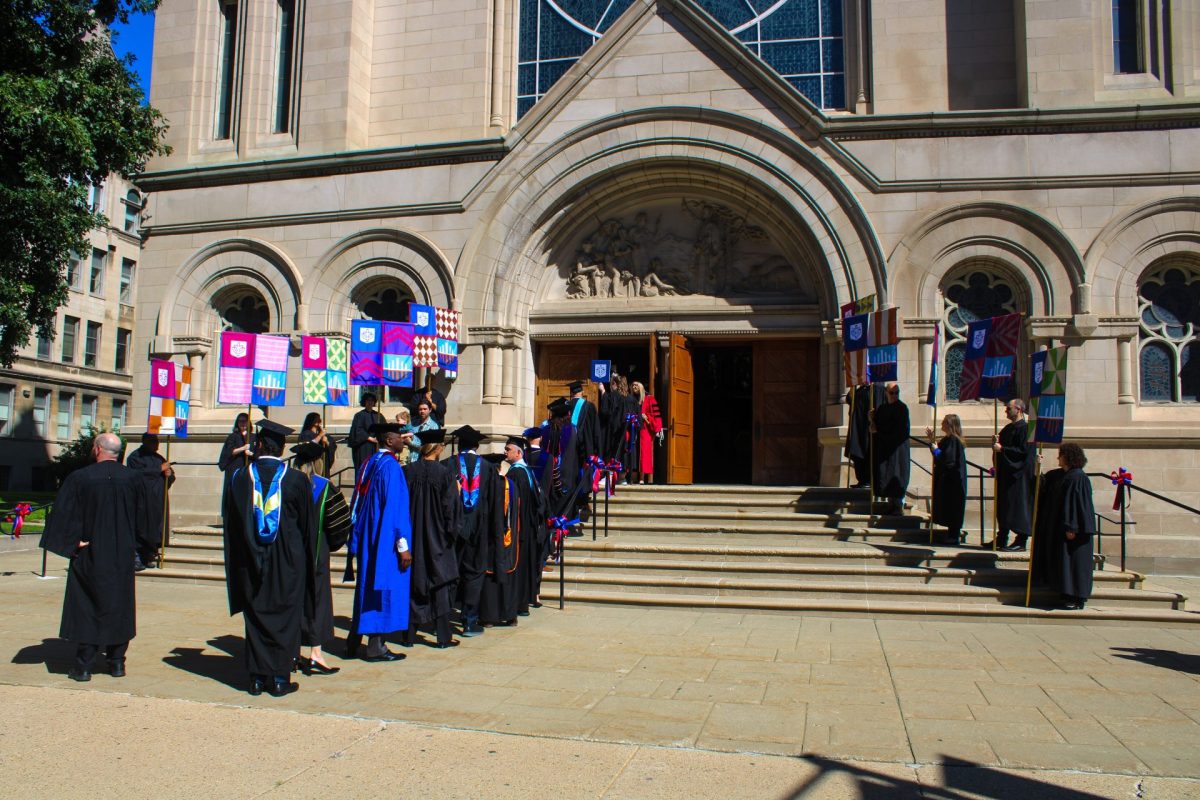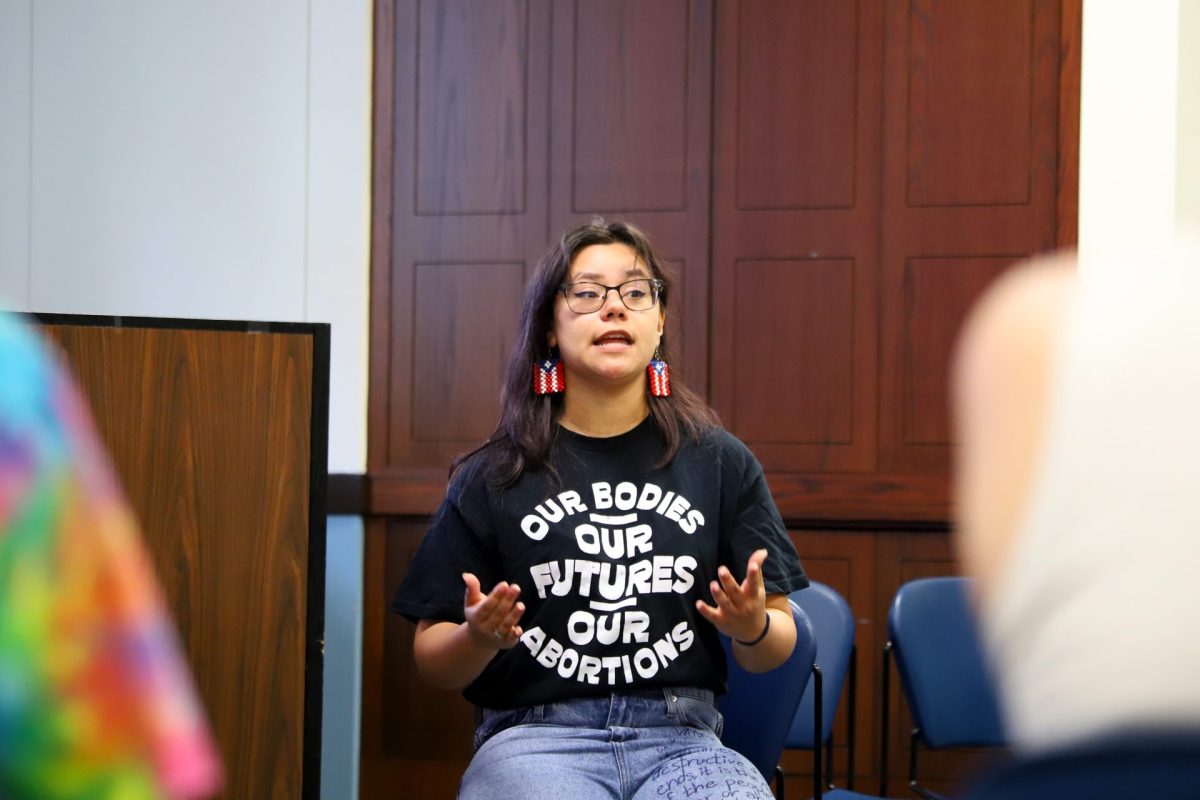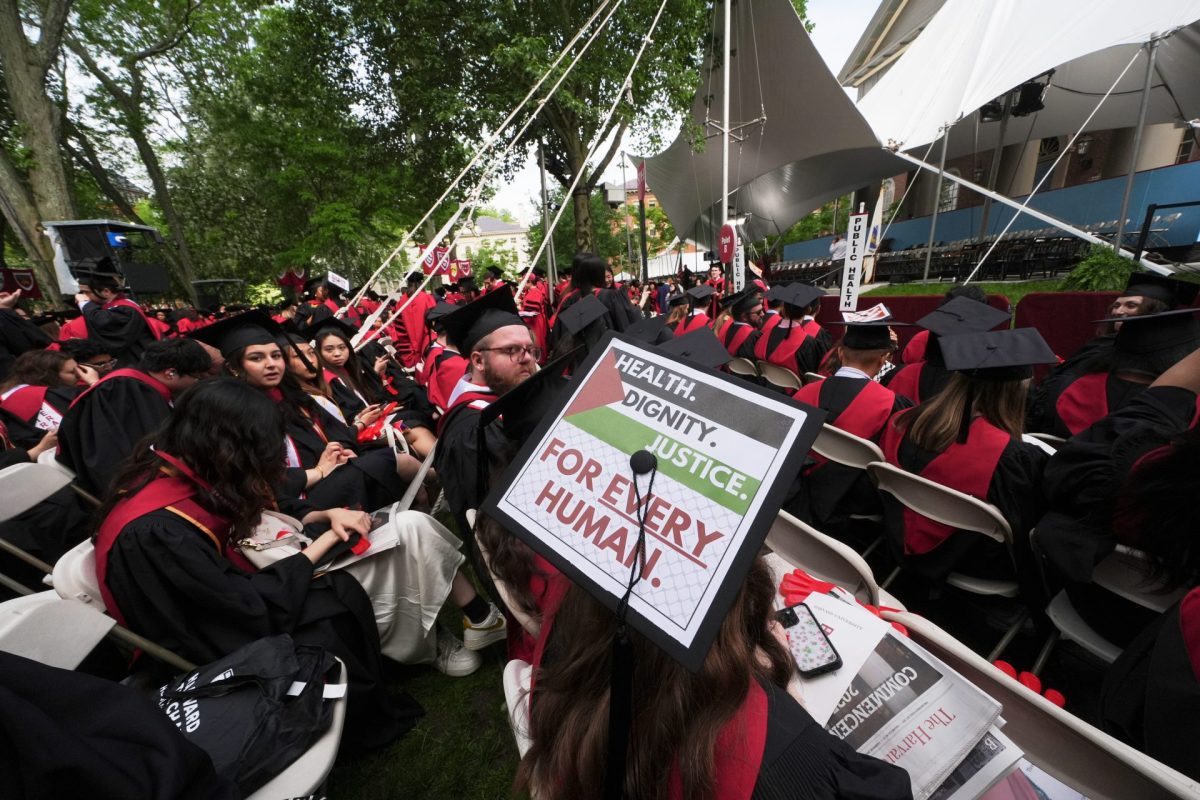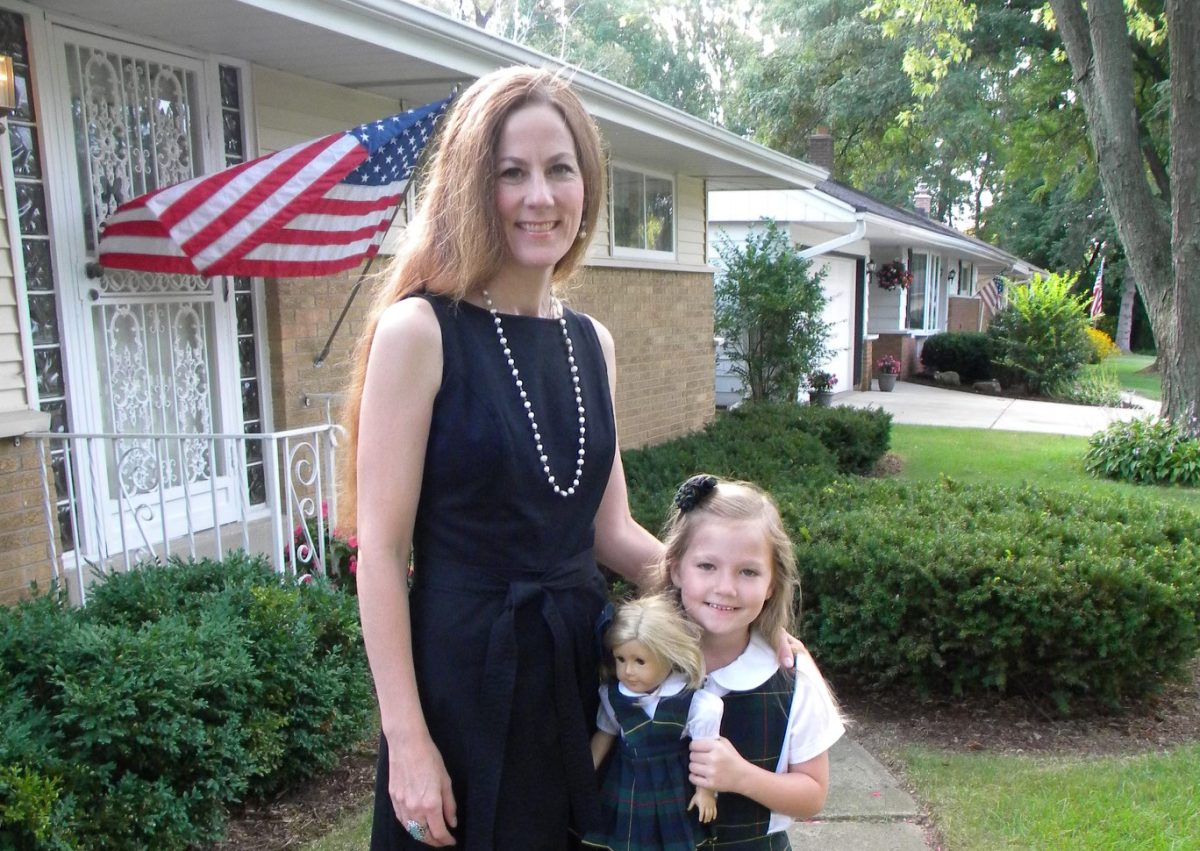To make DePaul “the standard for higher education” amid financial struggles and worsening public confidence in higher education, the university released the Designing DePaul Draft Report Thursday, Aug. 31, following academic convocation.
The 51-page report, compiled from feedback of 3,000 DePaul community members–comprised of students, faculty, staff and alumni–aims to:
– Make a student health care plan available by autumn 2024;
– Close the achievement and retention gap for minority students within 10 years;
– Make DePaul a “Hispanic-serving institution”;
– And bolster the university’s digital presence with artificial intelligence and a new Chief Branding Officer.
President Robert Manuel also announced a two-part capital campaign for philanthropic fundraising to build a new $60 million basketball practice facility and an aspirational $1 billion goal for student scholarships, academics and to establish interdisciplinary institutes for poverty, the environment and artificial intelligence.
“I believe that these options provide us grounded, creative and achievable possibilities to lead us to a place of prominence and stability in higher education,” Manuel said in a speech during convocation.
Though the Designing DePaul draft emphasizes taking action to improve overall student life, members of DePaul’s Student Government Association (SGA) have expressed concern about the uncertain timelines for key initiatives and the low turnout figures for the program’s listening sessions last year.
“Looking at the plan that’s outlined now, I am a little concerned that some of the initiatives are not exactly what students want,” said Jaslynn Hodges, SGA chief of staff.
Hodges said the low student turnout in Designing DePaul sessions might have been remedied if the administration had more direct contact with SGA throughout the Designing DePaul process last year.
“One of the main things that could have been done was simply reaching out to SGA and asking questions – and then maybe even allow us to reach out to the community or network to get more student buy-in,” Hodges said.
Of 50 Designing DePaul sessions last year, one was hosted in collaboration with SGA. All sessions were open for student attendance.
“For a plan as ambitious as this. I think it would have been helpful to have a little bit more student input,” Hodges said. “…We didn’t get the plan or the draft that President Rob shared with the community until everyone else.”
Hodges said the shared governance model between administration and SGA has been disappointing.
“I hope students can mobilize and leave even more comments on what is important to them to be considered for the final report,” said Parveen Mundi, president of SGA.
Mundi urged students to express their suggestions through productive outlets such as the comment forum open this month for the Designing DePaul draft report.
“More students, including myself, need to vocalize our suggestions through the feedback page instead of in an article like this or on social media,” Mundi said. “ … and do this en masse to get any of the changes we want.”
Closing the Achievement and Retention Gap
DePaul has a 42% graduation rate for Hispanic students and a 44%graduation rate for Black students compared with a 61% graduation rate for white students, according to the fall 2022 census figures.
Darryl Arrington, associate vice president for student retention and success in the Office of Institutional Diversity and Equity, is tasked with closing these gaps within 10 years, per the Designing DePaul goal.
In doing this, Arrington plans to redesign DePaul Central, the university’s hub for managing financial aid, Campus Connect, advising and other logistics aimed at supporting student retention.
“We want to start moving to a more proactive model where we anticipate some of the problems students experience and calibrate our systems to address those quickly and thoroughly,” Arrington said.
After changes are implemented, Arrington said it would take time to evaluate if the changes impact classes and demographics.
Though 3,000 community members contributed to the Designing DePaul sessions, a fraction of DePaul’s more than 20,000 students and vast alumni network, Arrington emphasized quality over quantity.
“I think those who wanted to be involved had a platform for their voices to be heard and that’s not always something we get within transformational processes,” Arrington said.
He said these initiatives will help DePaul practice the Vincentian mission it preaches – and that all students will ultimately benefit once the initiatives are put in place in the next decade.
“You can’t have inequities in your own house and say that you want to address them in the world,” Arrington said.
Making DePaul a Hispanic-Serving Institution
Making DePaul a Hispanic-Serving Institution (HSI) is another step toward closing achievement and retention gaps, said Jose Perales, interim vice president for institutional diversity and equity.
Nearly 23% of DePaul’s student population is Hispanic compared with a 48.2%white population, according to the university’s fall 2022 census.
“We are an emerging HSI,” Perales said. “We are emerging because our numbers are very close to 25 percent.”
To be eligible to apply for HSI status, an institution must have and maintain a 25 %Hispanic population.
“Having this designation allows us to get funding that builds capacity for all students,” Perales said.
HSIs are eligible to apply for grants to enhance their academic infrastructure and cater to the needs of underrepresented student groups.
As of yet, there are no definite plans for academic infrastructure to support more Hispanic students.
An HSI task force will hold an inaugural meeting this week to develop a strategic plan and timeline for when the DePaul community should expect this goal to become a reality.
The Designing DePaul plan said investing in bilingual resources, hiring professionals to support a larger Hispanic population and engaging Chicago Public Schools will be evaluated during this process.
“We’re still very much in the early stages,” Perales said.
Students are wary of how long this process will take.
“The timeline is a bit wonky right now, especially with the Black Equity Initiative and DePaul becoming an HSI,” said Adora Alava, executive vice president of diversity and equity for the SGA.
DePaul’s The Black Equity Initiative was established about two years ago and offers suggestions for how to support the lives of current Black students and expand efforts to establish a larger Black student population.
“Through the Office of Institutional Diversity and Equity, we will formalize plans to adopt as many of the recommendations from the Black Equity Initiative as possible,” read the Designing DePaul draft report.
Despite the uncertain timeline, Alava is excited to use the momentum of Designing DePaul to push forward the BEI and HSI standing so that DePaul can get more funding for scholarships and DEI programming.
“Marginalized communities need to be heard now,” Alava said.
Student Health Insurance Next Year
During his convocation speech, Manuel admitted that DePaul is in the minority in not offering a student health insurance plan.
Creating a student health care requirement has been in the works since 2022, but vice president of student affairs Eugene Zdziarski said the idea will finally be realized and available for all degree-seeking students by fall 2024.
Zdziarski said all students will be required to have health insurance next year but can opt out of the DePaul plan if they have existing coverage.
The Division of Student Affairs will oversee the process with input from the Student Government Association, Faculty Council as well as a staff member with expertise.
“Next spring, our current students will be able to begin the process of opting out of that plan by demonstrating that they’ve got current insurance,” Zdziarski said.
The plan then goes into effect in fall 2024 and gets incorporated into students’ overall tuition bill.
Eliminating barriers to both mental and physical health care is a priority of this initiative.
“Student well-being is a critical part of their overall success at the university,” Zdziarski said.
Next Steps
Grand initiatives boasted by Designing DePaul come with positive intentions to improve student life and DePaul’s national branding, but there are many unknowns at this point.
The Designing DePaul draft report is open for community input until Oct. when a final report with the incorporated feedback will be finalized.
“Throughout the year, you can expect to receive regular progress reports from both me and leaders across the university,” Manuel said.
Editor’s note: This version of story corrects reference to DePaul’s plan to raise $1 billion, which is an aspirational goal to help fund student scholarships and academics, in addition to interdisciplinary institutes for poverty, the environment and artificial intelligence.




















